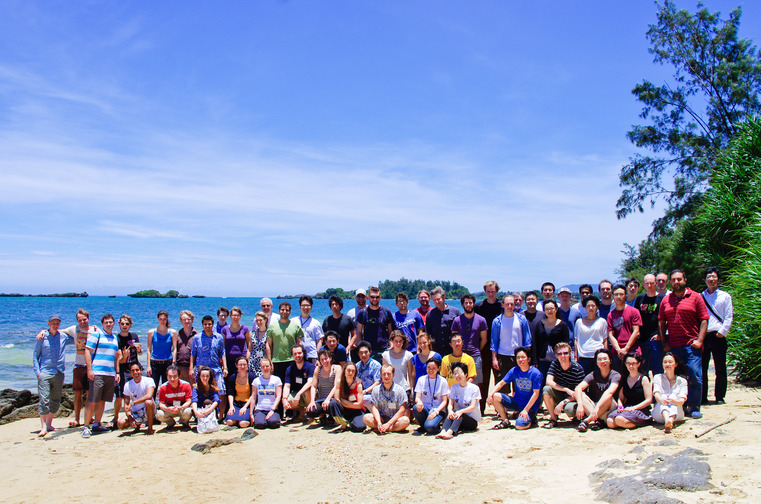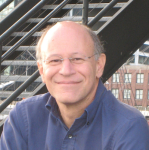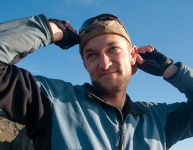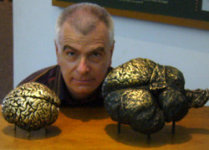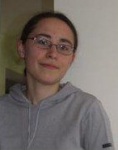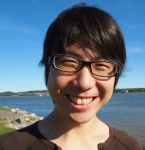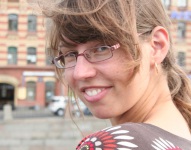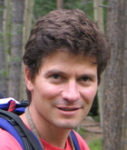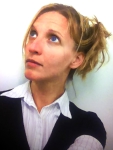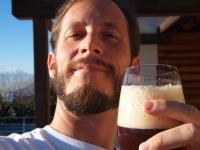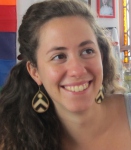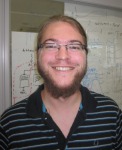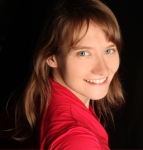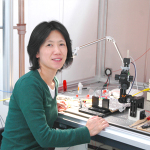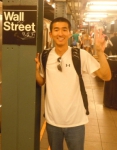OCNC2012
Okinawa Computational Neuroscience Course 2012
Top | Program | Lectures | People
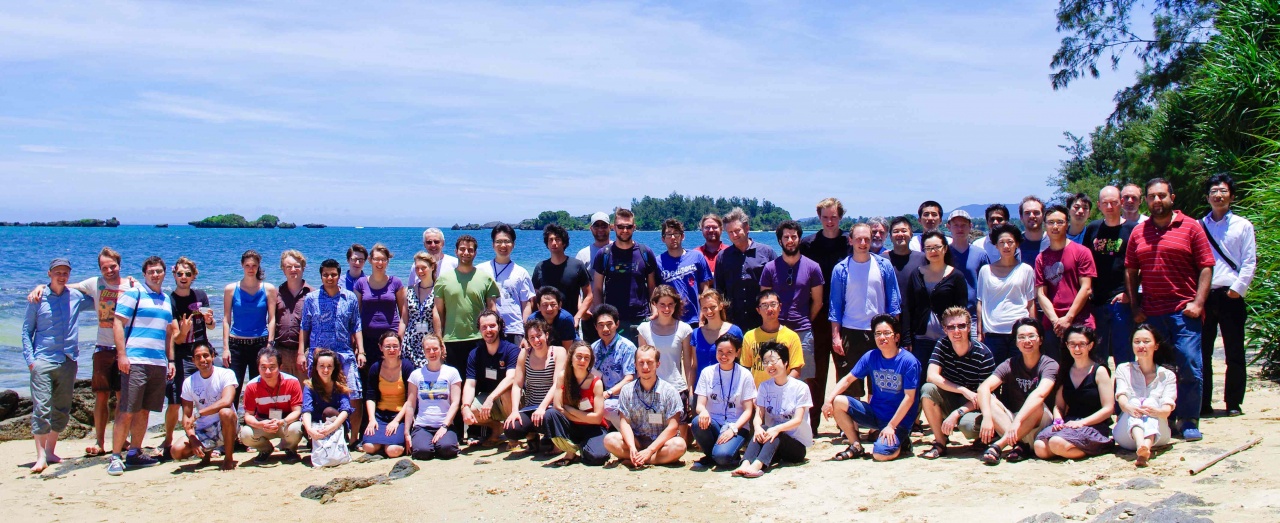
The aim of the Okinawa Computational Neuroscience Course is to provide opportunities for young researchers with theoretical backgrounds to learn the latest advances in neuroscience, and for those with experimental backgrounds to have hands-on experience in computational modeling.
We invite graduate students and postgraduate researchers to participate in the course, held from June 11th through June 29th, 2012 at an oceanfront seminar house of the Okinawa Institute of Science and Technology. Applications are through the course web page only; they will open January 9th and close February 12th, 2012. Applicants are required to propose a project at the time of application. Applicants will receive confirmation of acceptance in March.
Like in preceding years, OCNC will be a comprehensive three-week course covering single neurons, networks, and behaviors with ample time for student projects. The first week will focus exclusively on methods with hands-on tutorials during the afternoons, while the second and third weeks will have lectures by international experts. We invite those who are interested in integrating experimental and computational approaches at each level, as well as in bridging different levels of complexity.
Participants in the course will be provided with lodging and meals free of charge and travel expenses will be covered for those without travel funding. There is no fee for the course itself. We hope that this course will be a good opportunity for theoretical and experimental neuroscientists to meet each other and to explore the attractive nature and culture of Okinawa, the southernmost island prefecture of Japan.
Schedule
A list of lecture topics can be found at Program.
- January 9:
- Application process opens
- February 12:
- Application process closes
- Mid March:
- Notification of acceptance
- End March:
- Confirmation of acceptance
- June 10:
- Arrival
- June 11-16:
- Methods
- June 18-23:
- Neurons, Networks and Behaviors I
- June 25-June 28:
- Neurons, Networks and Behaviors II
- June 28:
- Student presentations
- June 29:
- Departure
Organizers
Lecturers
- Abbott, Larry
- Arbuthnott, Gordon
- Bialek, William
- Buzsaki, Gyorgy
- Canavier, Carmen
- De Schutter, Erik
- Diesmann, Markus
- Doya, Kenji
- Häusser, Michael
- Ishii, Shin
- Izhikevich, Eugene
- Kuhn, Bernd
- Lee, Daeyeol
- Marder, Eve
- Stephens, Greg
- Yazaki-Sugiyama, Yoko
Tutors
- Clopath, Claudia
- Deger, Moritz
- Hong, Sungho
- McTavish, Tom
- Negrello, Mario
- Tanaka, Hirokazu
- Torben-Nielsen, Ben
Top | Program | Lectures | People
OCNC 2012 Program
This program is provisional and subject to change. Program updates will be posted on the OCNC forum at http://workshop.oist.jp
All lectures take place in the Seminar Room, OIST Seaside House unless otherwise indicated.
Week 1: Methods (June 11-16)
June 11
- 09:30-09:45
- Welcome (Organizers)
- 10:00-12:30
- Parallel session: Introduction to numerical methods for ordinary and partial differential equations (Kenji Doya)
- 10:00-12:30
- Parallel session: Basic Neurobiology for information processing (Yoko Yazaki-Sugiyama)
- 14:00-16:00
- Poster session I
- 16:00-18:00
- Poster session II
- 19:00-21:00
- Reception & Dinner
June 12
- 09:30-12:30
- Modeling biochemical reactions, diffusion and reaction-diffusion systems (Erik De Schutter)
- 14:00-15:00
- Introduction of the Tutors
- 15:00-16:30
- Tutorial: Matlab1
- 16:30-18:00
- Tutorial: Analysis in Matlab
June 13
- 09:30-12:30
- Imaging Methods / Ion channel physiology and the Hodgkin-Huxley model of neuronal activity (Bernd Kuhn)
- 14:00-16:00
- Tutorial: Neuron 1
- 16:00-18:00
- Tutorial: Analysis in Python
June 14
- 09:30-12:30
- Introduction to modeling neurons and networks (Erik De Schutter)
- 14:00-16:00
- Tutorial: NEST
- 16:00-18:00
- Tutorial: Matlab 2
June 15
- 09:30-12:30
- Introduction to reinforcement learning and Bayesian inference (Kenji Doya)
- 14:00-16:00
- Tutorial: Advanced topics, questions
- 16:00-18:00
- Project work or meeting with faculty
June 16
- 09:30-12:30
- TBA (Greg Stephens)
- 14:00-16:00
- Project work
Week 2: Neurons, Networks and Behaviors I (June 18-23)
June 18
- 09:30-12:30
- Modeling the Olfactory System (Larry Abbott)
- 14:00-16:00
- Project work or meeting with faculty
- 16:00-18:00
- Project work
June 19
- 09:30-12:30
- Reinforcement learning in individual and social decision making (Daeyeol Lee)
- 14:00-17:00
- Campus tour
- 16:00-18:00
- Project work or meeting with faculty
June 20
- 09:30-12:30
- Variability, Homeostasis, Modulation and Compensation in a Rhythmic Neuronal Network (Eve Marder)
- 14:00-16:00
- Project work or meeting with faculty
- 16:00-18:00
- Project work
June 21
- 09:30-12:30
- TBA (William Bialek)
- 14:00-17:00
- Investigating network dynamics with integrate-and-fire model neurons (Markus Diesmann)
- 17:00-18:00
- Project work
June 22
- 09:30-12:30
- Neural syntax, brain rhythms and cell assemblies (Gyorgy Buzsaki)
- 14:00-16:00
- Project work or meeting with faculty
- 16:00-18:00
- Project work
June 23
- 09:30-12:30
- Modeling and simulations of neuronal morphology (Shin Ishii)
- 14:00-16:00
- Project work or meeting with faculty
Week 3: Neurons, Networks and Behaviors II (June 25-28)
June 25
- 09:30-12:30
- TBA (Michael Häusser)
- 14:00-16:00
- Project work or meeting with faculty
- 16:00-18:00
- Project work
June 26
- 09:30-12:30
- Project work
- 14:00-18:00
- Project work or meeting with faculty
June 27
- 09:30-12:30
- Using Phase Resetting to Understand Networks of Oscillators (Carmen Canavier)
- 14:00-16:00
- Project work or meeting with faculty
- 16:00-18:00
- Project work
June 28
- 09:30-12:30
- Large-scale modeling of the brain (Eugene Izhikevich)
- 14:00-17:00
- Student project presentations
- 19:00-21:00
- Farewell Party & Dinner
Top | Program | Lectures | People
Lecture Abstracts & Readings
Eugene Izhikevich
Large-scale modeling of the brain
I will describe all the major steps in building a detailed large-scale thalamocortical model based on experimental measures in several mammalian species. The model spans three anatomical scales. (i) It is based on global (white-matter) thalamocortical anatomy obtained by means of diffusion tensor imaging (DTI) of a human brain. (ii) It includes multiple thalamic nuclei and six-layered cortical microcircuitry based on in vitro labeling and three-dimensional reconstruction of single neurons of cat visual cortex. (iii) It has 22 basic types of neurons with appropriate laminar distribution of their branching dendritic trees. The model simulates one million multicompartmental spiking neurons calibrated to reproduce known types of responses recorded in vitro in rats. It has almost half a billion synapses with appropriate receptor kinetics, short-term plasticity, and long-term dendritic spike-timing-dependent synaptic plasticity (dendritic STDP). The model exhibits behavioral regimes of normal brain activity that were not explicitly built-in but emerged spontaneously as the result of interactions among anatomical and dynamic processes. I will describe spontaneous activity, sensitivity to changes in individual neurons, emergence of waves and rhythms, and functional connectivity on different scales.
Suggested reading
E.M. Izhikevich: Dynamical Systems in Neuroscience The MIT Press (2007)
All relevant chapters are available online at http://izhikevich.org/publications/dsn/index.htm
The 2008 PNAS paper (with Dr. Edelman):
http://izhikevich.org/publications/large-scale_model_of_human_brain.htm
Daeyeol Lee
Reinforcement learning in individual and social decision making
Reinforcement learning describes a computational process by which the new information is appropriately incorporated into the value functions that determine the likelihood of choosing each action. In model-free or simple reinforcement learning algorithms, the value functions are updated according to the actual outcomes from chosen actions, whereas in model-based reinforcement learning, internal models of the decision makers about their environment can be revised according to their sensory information and used to predict the outcomes from all available options. As a result, the decision makers can update their behaviors more flexibly by using a model-based reinforcement learning algorithm. This can be particularly useful during social decision making. After a brief introduction to the reinforcement learning theory and game theory, I will discuss key findings from recent studies that characterized core mechanisms of reinforcement learning and how they might be adapted to social decision making.
Suggested reading
Lee D, Seo H, and Jung MW (2012) Neural basis of reinforcement learning and decision making. Annual Review of Neuroscience. In press.
Lee D (2008) Game theory and neural basis of social decision making. Nature Neurosci. 11: 404-409.
Abe H and Lee D (2011) Distributed coding of actual and hypothetical outcomes in the orbital and dorsolateral prefrontal cortex. Neuron 70: 731-741.
Shin Ishii
Modeling and simulations of neuronal morphology
Neuronal morphology would be an information processing basis of neurons. During development, neurons acquire their morphology to work as information processing elements. Even in a uniform environment, typical neurons produce single axons from multiple neurites in a stable manner. First, I introduce a computational model of this symmetry-breaking phenomenon, neuronal polarization, which is characterized by stability and flexibility. After establishing the single-axon structure, the axon is guided by extra-cellular guidance molecules, in order to perform appropriate neuronal wiring. However, this axon guidance is an extremely complicated phenomenon; it shows bidirectionality, attraction and repulsion, depending largely on the status of intracellular calcium signaling. To know the mechanism underlying this calcium-dependent bidirectionality, I next introduce a computational model of intracellular biophysics in the axon guidance. During the guidance, actin filaments in a neuronal growth cone are dynamically regulated by extracellular guidance molecules, which produce driving force of the axon; this dynamic cytoskeleton is also involved in cellular chemotaxis. Then, I introduce a multi-physical model of cellular chemotaxis and show its large-scale simulations. Our simulation model includes actin filament dynamics, membrane, and intracellular signaling related to cytoskeleton regulation, and it works on the Japan???s supercomputer K. Through simulations of cellular chemotaxis and invasion, we observed that the cell dynamically changes its morphology to appropriately adapt to the surrounding environment. Moreover, by introducing the model of bendable actin filaments, we can simulate in vitro formation of filopodial structures.
Suggested reading
Naoki, H., Sakumura, Y., & Ishii, S. (2008). Stochastic control of spontaneous signal generation for gradient sensing in chemotaxis. Journal of Theoretical Biology, 255, 259-266.
Toriyama, M., Sakumura, Y., Shimada, T., Ishii, S., & Inagaki, N. (2010). A diffusion-based neurite length-sensing mechanism involved in neuronal symmetry breaking. Molecular Systems Biology, 6(394), doi:10.1038/msb.2010.51
Naoki, H., Nakamuta, S., Kaibuchi, K., & Ishii, S. (2011). Flexible search for single-axon morphology during neuronal spontaneous polarization. PLoS ONE 6(4): e19034, doi:10.1371/journal.pone.0019034.
Nonaka, S., Naoki, H., & Ishii, S. (2011). A multi-physical model of cell migration with reaction-diffusion, membrane and cytoskelton. Neural Networks, 24(11), 979-989.
Daeyeol Lee
Reinforcement learning in individual and social decision making
Reinforcement learning describes a computational process by which the new information is appropriately incorporated into the value functions that determine the likelihood of choosing each action. In model-free or simple reinforcement learning algorithms, the value functions are updated according to the actual outcomes from chosen actions, whereas in model-based reinforcement learning, internal models of the decision makers about their environment can be revised according to their sensory information and used to predict the outcomes from all available options. As a result, the decision makers can update their behaviors more flexibly by using a model-based reinforcement learning algorithm. This can be particularly useful during social decision making. After a brief introduction to the reinforcement learning theory and game theory, I will discuss key findings from recent studies that characterized core mechanisms of reinforcement learning and how they might be adapted to social decision making.
Suggested reading
Lee D, Seo H, and Jung MW (2012) Neural basis of reinforcement learning and decision making. Annual Review of Neuroscience 35: 287-308
Abe H and Lee D (2011) Distributed coding of actual and hypothetical outcomes in the orbital and dorsolateral prefrontal cortex. Neuron 70: 731-741.
Carmen Canavier
Using Phase Resetting to Understand Networks of Oscillators
Oscillations and synchrony are important in motor patterning and cognition, and aberrant synchronization may underlie many dynamical diseases. Phase resetting theory was developed to study the emergent activity of coupled systems of oscillators. First the concepts of phase resetting will be explained, then the theoretical applications of phase resettting theory to neural systems will be presented. There are two types of general theory. One uses the assumption of weak coupling to study slowly varying average phase differences. The other method assumes pulsatile coupling to construct firing time maps. The history of each method as applied to neural oscillators will be presented. The essential assumptions underlying these methods will be discussed in order to clarify in what situations each method may be applied, and in what situations they will fail. Simple two neuron networks will be dissected, then generalizations to larger networks will be presented. Some cases that will examined include global synchrony, clustering and splay phase modes. The effects of delays will be discussed, as will the effects of heterogeneity and different types of noise.
Suggested reading
http://www.scholarpedia.org/article/Phase_Response_Curve
http://www.scholarpedia.org/article/Pulse_coupled_oscillators
Eugene M. Izhikevich
Dynamical Systems in Neuroscience:
The Geometry of Excitability and Bursting
The MIT Press, 2007 Chapter 10 only, available at
http://www.izhikevich.org/publications/dsn/index.htm
Markus Diesmann
Investigating network dynamics with integrate-and-fire model neurons
The function of the local cortical network remains to be uncovered. Experimental research has, however, described characteristic features of the network architecture and the dynamical state in vivo. The nerve cells emit action potentials called spikes at a low rate while the membrane potential exhibits large fluctuations. The spiking activity in the network is asynchronous and the spike trains of individual neurons are irregular. Pairs of neurons exhibit a distinct temporal correlation structure while the magnitude of the correlation is small compared to the amount of common drive by other neurons. Over the last 20 years the theory of balanced random networks has been developed integrating all these phenomena. Furthermore, the theory is rich enough to predict network properties where it still needs to be settled whether these are exhibited or used by the brain. Examples are the ability to rapidly track an input signal to the network, the existence of rate attractors for working memory, the local contributions to the power spectrum, a joint stationary state with spike-timing dependent plasticity (STDP), and self-sustained activity states.
Larry Abbott
Modeling the Olfactory System
The olfactory system includes some of the most organize and some of the most disorganized circuitry in the nervous system. I will review recent experimental results that reveal novel features of olfactory circuitry, and discuss models that help to illuminate the function implications of these features.
Suggested reading
Luo, S., Axel, R. and Abbott, L.F. (2010) Generating Sparse and Selective Third-Order Responses in the Olfactory System of the Fly. Proc. Natl. Acad. Sci. USA 107:10713-10718.
Olsen SR, Bhandawat V, Wilson RI (2010) Divisive normalization in olfactory population codes. Neuron 66:287-299.
Stettler DD, Axel R (2009) Representations of odor in the piriform cortex. Neuron 63: 854-864.
Laurent G (2002) Olfactory network dynamics and the coding of multidimensional signals. Nature Rev of Neurosci 3:884-895.
KM Franks, MJ Russo, DL Sosulski, AA Mulligan, SA Siegelbaum, and R Axel (2012) Recurrent circuitry dynamically shapes the activation of piriform cortex. Neuron 72:49-56.
Eve Marder
Variability, Homeostasis, Modulation and Compensation in a Rhythmic Neuronal Network
How do the nervous systems of long-lived animals deal with the problem of constant turnover of receptors and ion channel proteins while ensuring that stable brain function is maintained throughout the animal's lifetime? How different are the nervous systems of healthy animals, and where are the boundaries between health and disease? I will summarize recent work that shows that similar circuit outputs can be produced with highly variable circuit parameters. This work argues that the nervous system of each healthy individual has found a set of different solutions that give 'good enough' circuit performance. Studies using the crustacean stomatogastric nervous system argue that synaptic and intrinsic currents can vary far more than the output of the circuit in which they are found. These data have significant implications for the mechanisms that maintain stable function over the animal's lifetime, and for the kinds of changes that allow the nervous system to recover function after injury. In this kind of complex system, merely collecting mean data from many individuals can lead to significant errors, and it becomes important to measure as many individual network parameters in each individual as possible. Multiple solutions in the population provide a substrate for evolutionary change in response to environmental perturbations.
Suggested reading
Prinz, A.A., Bucher, D. and Marder, E. (2004) Similar network activity from disparate circuit parameters. Nat. Neurosci., 7: 1345-1352.
Marder, E. and Bucher, D. (2007) Understanding circuit dynamics using the stomatogastric nervous system of lobsters and crabs. Annu Rev Physiol, 69: 291-316.
Goaillard, J.-M., Taylor, A.L., Schulz, D., and Marder, E. (2009) Functional consequences of animal-to-animal variation in circuit parameters. Nature Neuroscience, 12: 1424-1430. PMC2826985.
Tang, L.S., Goeritz, M., Caplan, J., Taylor, A.L., Fisek, M. and Marder, E. (2010) Precise temperature compensation of phase in a rhythmic motor pattern. PLoS Biology, 8(8): e1000469. doi:10.1371/journal.pbio.1000469. highlighted in a Synopsis. PMC2930868
Marder, E. and Taylor, A.L. (2011) Multiple models to capture the variability in biological neurons and networks. Nature Neuroscience, 14: 133-138. PMC2826985.
Marder, E. (2011) Variability, compensation, and modulation in neurons and circuits PNAS, 108, 15542-15548, suppl. 3 PMC3176600
Bernd Kuhn
Imaging Methods
Functional imaging becomes more and more important in neuroscience. I will introduce the most important imaging methods. I will explain what we can learn from imaging but also the limitations of the different methods.
Ion channel physiology and the Hodgkin-Huxley model of neuronal activity
I will give an introduction on ion channels and specifically focus on voltage-gated channels and their dynamics in response to membrane voltage. A combination of different voltage-gated channels is used by neurons to generate fast (about 1 ms) voltage changes. I will talk about the first model by Hodgkin and Huxley describing this electrical activity. I will also talk about more recent additions or fine-tuning of this time-honored model.
Suggested reading
Helmchen, Konnerth: Imaging in Neuroscience, 2011
Yuste, Lanni, Konnerth: Imaging Neurons, 2000
Johnston and Wu: Foundation of cellular neurophysiology, MIT press
Yoko Yazaki-Sugiyama
Basic neurobiology for information processing.
How do animals control their behavioral output? How do they sense the inputs from outside?
Brain is the organ that obtains information about the environment among us, process, transforms, and stores this information. It works for generating complicated behavior, and are responsible to define aspects of behavior as feelings and abstract of thought. Neurons which compose the brain are the key players for signal processing for making these difficult tasks with wiring each other. In this lecture we will learn basic physiological character and mechanism of neurons to see how they conveying signals. We will also try to get an idea how neurons can compute signals by wisely connecting each other.
Suggested reading
The neuron: Cell and Molecular Biology. I.B. Levitan and L.K. Kaczmarek, Oxford University Press
Erik De Schutter
Modeling biochemical reactions, diffusion and reaction-diffusion systems
In my first talk I will use calcium dynamics modeling as a way to introduce deterministic solution methods for reaction-diffusion systems. The talk covers exponentially decaying calcium pools, diffusion, calcium buffers and buffered diffusion, and calcium pumps and exchangers. I will describe properties of buffered diffusion systems, ways to characterize them and new approximations that we developed for use in large neuron models.
In the second talk I will turn towards stochastic reaction-diffusion modeling. Two methods will be described: Gillespie's Stochastic Simulation algorithm extended to simulate diffusion, and particle-based methods. I will discuss some of the problems in generating correct descriptions of microscopic 3D geometries and briefly describe the STEPS software. I will then describe two applications: stochastic reaction modeling of LTD induction in Purkinje cells and stochastic diffusion modeling of anomalous diffusion in spiny dendrites.
Introduction to modeling neurons and networks
In the first talk I will discuss methods to model morphologically detailed neurons. I will briefly introduce cable-theory, the mathematical description of current flow in dendrites. By discretizing the cable equation we come to compartmental modeling, the standard method to simulate morphologically detailed models of neurons. I will discuss the challenges in fitting compartmental models to experimental data with an emphasis on active properties. The talk will finish with a brief overview of dendritic properties predicted by cable theory and experimental data confirming these predictions.
The second talk will briefly introduce network modeling. I will introduce simpler neuron models like integrate-and-fire neurons and then move on to modeling synaptic currents. I will wrap up with an overview of network connectivity.
Suggested reading
• U.S. Bhalla and S. Wils: Reaction-diffusion modeling. In Computational Modeling Methods for Neuroscientists, E. De Schutter ed., MIT Press, Boston. 61–92 (2009)
• E. De Schutter: Modeling intracellular calcium dynamics. In Computational Modeling Methods for Neuroscientists, E. De Schutter ed., MIT Press, Boston. 61–92 (2009)
• G. Antunes and E. De Schutter: A stochastic signaling network mediates the probabilistic induction of cerebellar long-term depression. Journal of Neuroscience: in press (2012).
• F. Santamaria, S. Wils, E. De Schutter and G.J. Augustine: Anomalous diffusion in Purkinje cell dendrites caused by dendritic spines. Neuron 52: 635-648 (2006).
• Several chapters in Computational Modeling Methods for Neuroscientists, E. De Schutter ed., MIT Press, Boston (2009).
• V. Steuber et al.: Cerebellar LTD and pattern recognition by Purkinje cells. Neuron 54: 121–136 (2007).
Kenji Doya
Introduction to numerical methods for ordinary and partial differential equations
This tutorial introduces the basic concepts of differential equations and how to solve them, or simulate their behaviors in time, using a computer. Key concepts like eigenvalues and stability are explained while solving simple differential equation using MTALAB programming language. Some examples of Hodgkin-Huxley type neuron models and cable equations are also introduced.
Introduction to reinforcement learning and Bayesian inference
The aim of this tutorial is to present the theoretical cores for modeling animal/human action and perception. In the first half of the tutorial, we will focus on "reinforcement learning", which is a theoretical framework for an adaptive agent to learn behaviors from exploratory actions and resulting reward or punishment. Reinforcement learning has played an essential role of understanding the neural circuit and neurochemical systems behind adaptive action learning, most notably the basal ganglia and the dopamine system. In the second half, we will familiarize ourselves with the framework of Bayesian inference, which is critical in understanding the process of perception from noisy, incomplete observations.
Suggested reading
Doya K: Reinforcement learning: Computational theory and biological mechanisms. HFSP Journal, 1(1), 30-40 (2007)
Free on-line access: http://dx.doi.org/10.2976/1.2732246
Doya K, Ishii S: A probability primer. In Doya K, Ishii S, Pouget A,Rao RPN eds. Bayesian Brain: Probabilistic Approaches to Neural Coding, pp. 3-13. MIT Press (2007).
Free on-line access:
http://mitpress.mit.edu/catalog/item/default.asp?ttype=2&tid=11106
Gyorgy Buzsaki
Neural syntax, brain rhythms and cell assemblies
The dominant theoretical form of mental structure of the last century was implicitly a neuropsychological model. At the center of this model, necessary for episodic free recall, planning or logical reasoning, is Hebb's phase sequences of neuronal assemblies, i.e., hypothetical self-propagating loops of neuronal coalitions connected by modifiable synapses. These phase sequences can be activated by exogenous or endogenous (internal) sources of stimulation, independent from environmental determinants of behavior. The neurophysiological implication of this conjecture for episodic recall is that hippocampal networks in the brain (our personal, individualized 'search engine') are endowed by an internal mechanism that can generate a perpetually changing neuronal activity even in the absence of environmentalinputs. Recall of similar episodes would generate similar cell assembly sequences, and uniquely different sequence patterns would reflect differentepisodes. Using large-scale recording of neuronal ensembles in the behaving rodents, I will show experimental support for self-perpetuating activity of neuronalassemblies and demonstrate how brain oscillations support precise spike timing mechanisms for neuronal populations. I hypothesize that neuronal algorithms introduced for navigation in the physical environment in ''simpler'' animals are identical to those needed for memory recall and/or planning in animals with larger brains. The different appearance of representations in the hippocampus of differentspecies and different segments of the hippocampus in the same species may reflect its functional connectivity with the neocortex and other structures.
Suggested reading
Buzsaki, G. and Draguhn, A. Neuronal oscillations in cortical networks. Science 304: 1926-1929, 2004.
Buzsaki G. Rhythms of the Brain. Oxford University Press, 2007
E. Pastalkova, V. Itskov, A. Amarasingham, and G. Buzsáki. Internally generated cell assembly sequences in the rat hippocampus. Science 321, 5894:1322-7, 2008.
Buzsaki G. Neural syntax: cell assemblies, synapsembles, and readers.Neuron 68:362-85, 2010.
Top | Program | Lectures | People
People
Group photo
Lecturers
- Abbott, Larry
- Arbuthnott, Gordon
- Bialek, William
- Buzsaki, Gyorgy
- Canavier, Carmen
- De Schutter, Erik
- Diesmann, Markus
- Doya, Kenji
- Häusser, Michael
- Ishii, Shin
- Izhikevich, Eugene
- Kuhn, Bernd
- Lee, Daeyeol
- Marder, Eve
- Stephens, Greg
- Yazaki-Sugiyama, Yoko
Tutors
- Clopath, Claudia
- Deger, Moritz
- Hong, Sungho
- McTavish, Tom
- Negrello, Mario
- Tanaka, Hirokazu
- Torben-Nielsen, Ben
Students
- Ahmad, Sheeraz
- Brocke, Ekaterina
- Broxton, Michael
- Cayco Gajic, Natasha
- Dunn, Tim
- Engelken, Rainer
- Ghadooshahy, Azriel
- Guo, Rong
- Głąbska, Helena
- Hermoso Mendizabal, Ainhoa
- Iigaya, Kyo
- Kühn, Norma
- Lewis, Sarah
- Logiaco, Laureline
- Maksimov, Andrei
- Mitani, Akinori
- Naumann, Eva Aimable
- Niyogi, Ritwik
- Obien, Marie Engelene
- Rasumov, Nikon
- Schneider, Elisa
- Stensola, Tor
- Sweeney, Yann
- Torben-Nielsen, Benjamin
- Towse, Ben
- Weyhersmüller, Annika
- Zheng, Youwei
- Zylberberg, Joel
- du Hoffmann, Johann
Larry Abbott
|
Affiliation: |
Department of Neuroscience Columbia University |
| URL: | http://www.neurotheory.columbia.edu/~larry/ |
|
About: |
Theoretical neuroscience Neural network dynamics Olfactory system Motor systems |
Sheeraz Ahmad
|
Affiliation: |
University of California, San Diego |
|
About: |
I am a second year PhD student at UCSD interested in models of decision making. In that regard I have been working on a model that describes where a human subject would look in a visual search task. The model considers the 'reward' for each choice and learns the optimal decision that maximizes the reward. I want to extend the model for more complex decisions and advice from the panel of experts at OCNC will be very helpful at this early stage. As a young researcher I feel that OCNC will also introduce me to an array of topics which would in turn inform and supplement my future projects. I believe that learning in a course format is efficient, stimulating and longer lasting; OCNC offers just the kind of environment. Interacting with faculty and fellow researchers working in a variety of research areas will broaden my outlook and help me look at the bigger picture. Lastly, I am confident that this visit will result in an interesting project and hopefully some future collaborations. |
William Bialek
|
Affiliation: |
Princeton University |
| URL: | http://www.princeton.edu/~wbialek/wbialek.html |
|
About: |
I am interested in a wide range of theoretical problems at the interface of physics and biology. Two major themes are (1) signals, noise and information flow, and (2) the emergence of collective behavior. I am inspired by the fact that real biological systems often operate close to the physical limits on their performance. I have worked with experimental colleagues to establish examples of this optimality, and have used optimization as a theoretical principles from which various aspects of function and mechanism can be derived. My hope is that we can move past a collection of examples to provide a more unified theoretical picture. |
Ekaterina Brocke
|
Affiliation: |
1. Kungliga Tekniska högskolan, Department of Computational Biology 2. The National Centre for Biological Sciences (NCBS), Neurobiology |
| URL: | http://www.csc.kth.se/forskning/cb/ |
|
About: |
As a junior researcher in Neuroscience I have become fascinated with the idea behind the Okinawa Computational Neuroscience Course. The chance to learn the latest advances in Neuroscience, to obtain practical experience in computational modeling, to meet and be supervised by a well-known neuroscientists is very attractive for me and can be very useful for my further scientific way. I expect to learn a lot, to produce good and useful results during my project time. I hope to meet a lot of interesting theoretical and experimental young researchers and of course to have a sated and enjoyable summer time during the OCNC. |
Michael Broxton
|
Affiliation: |
Graphics Lab / Deisseroth Lab Stanford University |
| URL: | http://graphics.stanford.edu/~broxton/ |
|
About: |
As a relative newcomer to the field of neuroscience, I have been surprised to find few data sets with a combination of both temporal and spatial resolution necessary to understand how large networks of neurons function in real, intact organisms. It would seem that the dynamics and functional connectivity of neural networks in the brain still remains largely beyond our direct observation. Yet, isolated measurements of individual neurons give us a hint for what discoveries lie waiting once we can see the larger patterns of behavior in neural circuitry, and computational models and theories abound that stand ready to be tested once more data becomes available. |
Gyorgy Buzsaki
|
Affiliation: |
New York University, School of Medicine |
| URL: | http://www.med.nyu.edu/buzsakilab/ |
|
About: |
György Buzsáki is Biggs Professor of Neural Science at New York University. His primary interests are brain oscillations, sleep and memory. Buzsáki sits on the editorial boards of several leading neuroscience journals, including Science and Neuron. He is a co-recipient of the 2011 Brain Prize. (Book: G. Buzsáki, Rhythms of the Brain, OUP, 2006) |
Carmen Canavier
|
Affiliation: |
Department of Cell Biology and Anatomy LSU Health Sciences Center |
| URL: | http://www.medschool.lsuhsc.edu/neuroscience/faculty_detail.aspx?name=canavier_carmen |
|
About: |
My major area of research interest is computational neuroscience, specifically the nonlinear dynamics of neurons and small networks, synchronization, oscillation, central pattern generation, bursting neurons, midbrain dopaminergic neurons, and the regulation of the firing pattern in neurons. |
Natasha Cayco Gajic
|
Affiliation: |
University of Washington |
|
About: |
Hi everyone, I'm working on my PhD in Applied Mathematics at UW, studying the relationship between structure -- such as connectivity architecture, inhibition, and plasticity rules -- and the dynamics and coding properties of large networks of neurons. I have been working mainly with feedforward networks, but I hope that this course will give me new insights on computational neuroscience from a more biophysical perspective and in particular about computation in recurrent networks. Towards that end, I will be thinking about the role of plasticity in computation. I am very excited to meet everyone in Okinawa, and look forward to learning how people of different academic backgrounds think about neuroscience! |
Claudia Clopath
|
Affiliation: |
Center for Theoretical Neuroscience, Columbia University |
| URL: | http://www.neurotheory.columbia.edu/~claudia/ |
|
About: |
Modeling Synaptic Plasticity |
Erik De Schutter
|
Affiliation: |
Computational Neuroscience Unit Okinawa Institute of Science and Technology |
| URL: | http://groups.oist.jp/cnu |
|
About: |
I have been teaching for more than 10 years at European CNS summer schools and was part of the last five OCNCs. It is always exciting to meet the diverse groups of highly motivated young scientists attending our courses. Summer courses have an important function in teaching computational methods and approaches, and in establishing social networks among the participants. Ideally every neuroscientist, including experimentalists and clinicians, should attend a CNS course because computational methods have become essential tools to understand the complex systems we are studying. There is a broad range of modeling approaches available. I have specialized in data-driven, bottom-up methods that are more accessible to experimentalists because they are mainly parameter driven. This includes large compartmental models of neurons with active dendrites, networks with realistic connectivity using conductance based neuron models and reaction-diffusion models of molecular interactions. I will focus on the latter during my methods presentation, but please feel free to ask me or my collaborators about our other work! Most of the work in my lab concerns the cerebellum, including its main neuron the Purkinje cell. |
Moritz Deger
|
Affiliation: |
Bernstein Center Freiburg Albert-Ludwigs-University Freiburg |
| URL: | http://www.bcf.uni-freiburg.de/people/details/deger |
|
About: |
- Point process models of neurons and neural populations. - Structural plasticity in networks of spiking neurons. |
Markus Diesmann
|
Affiliation: |
Institute of Neuroscience and Medicine (INM-6), Computational and Systems Neuroscience, Research Center Juelich |
| URL: | http://www.csn.fz-juelich.de |
|
About: |
After almost 5 years at the Brain Science Institute in Wako-shi, I am since March 2011 serving as the director of the INM-6, Computational and Systems Neuroscience at the Research Center Juelich in Germany. In the new institute founded together with Sonja Gruen we are combining theoretical work on the dynamics and function of brain networks with the opportunities provided by supercomputing. Depending on the project we are following bottom-up as well as top-down approaches to neuroscience. In my own group Computational Neurophysics we are concentrating on the integration of the physiological and anatomical data into models at the resolution of cells and synapses and the development of corresponding simulation technology. In particular we are interested in the correlation structure of cortical networks and its interaction with synaptic plasticity.
|
Kenji Doya
|
Affiliation: |
Neural Computation Unit Okinawa Institute of Science and Technology |
| URL: | http://www.oist.jp/neural-computation-unit |
|
About: |
Kenji Doya took BS in 1984, MS in 1986, and Ph.D. in 1991 at U. Tokyo. He became a research associate at U. Tokyo in 1986, U. C. San Diego in 1991, and Salk Institute in 1993. He joined ATR in 1994 and became the head of Computational Neurobiology Department, ATR Computational Neuroscience Laboratories in 2003. In 2004, he was appointed as the principal investigator of Neural Computation Unit, Okinawa Institute of Science and Technology (OIST) and started Okinawa Computational Neuroscience Course (OCNC) as the chief organizer. As OIST re-established itself as a graduate university in 2011, he became a professor and the vice provost for research. He serves as the co-editor in chief of Neural Networks from 2008. He is interested in understanding the functions of basal ganglia and neuromodulators based on the theory of reinforcement learning. |
Tim Dunn
|
Affiliation: |
Engert Lab Harvard University |
| URL: | http://www.mcb.harvard.edu/Engert/ |
|
About: |
islands in Japan an oasis for the brain how does it all work? |
Rainer Engelken
|
Affiliation: |
Max Planck Institute for Dynamics and Self-Organization, Germany |
| URL: | http://www.nld.ds.mpg.de/ |
|
About: |
I want to get a better understanding of information processing in populations of neurons. In my PhD project supervised by Fred Wolf, I analyse the network mechanisms of visual cortical selectivity in rodents. |
Azriel Ghadooshahy
|
Affiliation: |
Massachusetts Institute of Technology / McGovern Institute |
|
About: |
I'm coming to the OCNC to further my understanding of computational neuroscience and apply it to my experimental work in non-human primates. I'm excited to work along side other individuals interested in combining computational and experimental approaches, as well as meet the various instructors and tutors! |
Rong Guo
|
Affiliation: |
TU Berlin |
| URL: | http://www.ni.tu-berlin.de/ |
|
About: |
I am interested in neuronal mechanisms and computational models relevant to perceptual learning and model-based decision making. I also look forward to gaining a broader exposure to computational neuroscience. But most importantly, I look forward to meeting all of you in Okinawa! |
Helena Głąbska
|
Affiliation: |
Department of Neurophysiology, Nencki Institute of Experimental Biology |
|
About: |
I wish to gain some idea about latest advances in neuroscience. I also want to improve my knowledge about modeling single cells and networks which I hope help me in my current research - modeling extracellular potential in thalamo-corticol loop. Besides I'm excited to visit Okinawa |
Ainhoa Hermoso Mendizabal
|
Affiliation: |
Cortical Circuit Dynamics Group. Institut d'investigacions Biomédiques August Pi i Sunyer (IDIBAPS) |
| URL: | http://neuro.fcrb.es/delaRochaLab/welcome.html |
|
About: |
I am currently a first year PhD student in Jaime de la Rocha's lab at IDIBAPS and my background is in physics. I am interested in the neural basis of sensory circuits and specially in the stochastic dynamics of sensory circuits and their impact on decision making. I am really looking forward to OCNC, as it is a great opportunity to learn the essentials of Computational and Systems Neuroscience and afterwards to implement them in my daily work,as well as to meet young neuroscientist from different backgrounds and nationalities. Moreover this is a unique opportunity to discover the Japanese culture. |
Sungho Hong
|
Affiliation: |
Computational Neuroscience Unit, OIST |
|
About: |
I am fascinated by the elusive nature of how neurons and neural circuits process information and have been trying to understand how the intrinsic cellular mechanisms make it possible by using computational models. In particular, I have worked on how the intrinsic excitability of neurons dictates their individual input/output functions as well as population coding via correlation. I am also interested in developing the computational techniques to help us construct the characterizations and models of neural systems. |
Kyo Iigaya
|
Affiliation: |
Center for Theoretical Neuroscience Columbia University |
| URL: | http://www.neurotheory.columbia.edu/ |
|
About: |
I'm a Ph.D. student at the Center for Theoretical Neuroscience at Columbia. Ultimately I'm very curious to know about the principles of animal behaviors, if they exist. Currently my research is focused on the learning and adaptive decision making in an uncertain world. In particular, I study the roles of synaptic modifications that take place over multiple timescales in memory and decision making process. |
Shin Ishii
|
Affiliation: |
Graduate School of Informatics, Kyoto University |
| URL: | http://hawaii.sys.i.kyoto-u.ac.jp/~ishii |
|
About: |
Shin Ishii is interested in computational models of intelligence and life. His research topics are computational neuroscience, systems neurobiology, statistical learning (reinforcement learning and unsupervised learning), bioinformatics and neuroinformatics. He is the leader of 'brain and neural systems team', next-generation integrated simulation of living matter project, and the head investigator of 'high-precision brain information sensing technology and brain information transmission technology, real-time brain information extraction and decoding technology, and life-assisting device control technology based on brain information decoding' (aka, 'development of network-based BMI') project, which are bothly Japan's national projects. |
Eugene Izhikevich
|
Affiliation: |
Brain Corporation |
| URL: | http://www.braincorporation.com |
|
About: |
My research revolves around biologically detailed models of neuronal dynamics. The modeling scales span orders of magnitude, from spike-generation mechanism of individual neurons, to cortical microcircuits involving hundreds of thousand neurons, to large-scale models that have the size of the human brain (hundred billion neurons and quadrillion synapses). |
Bernd Kuhn
|
Affiliation: |
OIST |
| URL: | http://www.oist.jp/optical-neuroimaging-unit |
|
About: |
My main research interest is imaging brain activity in awake, behaving animals with two-photon microscopy. I use synthetic and genetically encoded indicators to analyze cell activity on the cellular and network level. |
Norma Kühn
|
Affiliation: |
University Medical Center Göttingen, Germany |
| URL: | http://www.retina.uni-goettingen.de/ |
|
About: |
I recently started my PhD in the lab of Tim Gollisch, where I am investigating the processing of visual stimuli in the retinal circuitry. In particular I am interested in the impact of eye movements on population coding of retinal output cells. Having already analyzed some of my experimental data from the in-vitro retina, the course is a perfect opportunity for me to familiarize myself with the modelling of retinal circuits to better test my hypotheses of lateral information transfer. I am also eager to gain an insight into recent developments in computational neuroscience in general and to meet other people from the field, who enjoy discussing ideas and new developments beyond interdisciplinary borders. I am looking forward to meeting you all and hope for some very interesting weeks. |
Daeyeol Lee
|
Affiliation: |
Yale University School of Medicine |
| URL: | http://leelab.yale.edu |
|
About: |
Neural basis of decision making and reinforcement learning Neural basis of timing Behavioral game theory |
Sarah Lewis
|
Affiliation: |
Imperial College London |
| URL: | http://www3.imperial.ac.uk/people/kenneth.harris/research |
|
About: |
I am a PhD student in Kenneth Harris's group at Imperial, trying to understand how collections of neurons manage to self-organise into something useful. How might slow signals (like neurotrophins), passed from cell to cell, help organise synaptic plasticity? I work with computer, pen and paper, but try to read about real things too! I look forward to meeting you all, learning, working, and maybe swimming in the sea to look at some fish. |
Laureline Logiaco
|
Affiliation: |
Université Pierre et Marie Curie and École Polytechnique Fédérale de Lausanne |
| URL: | http://www.anc.upmc.fr/llogiaco.html |
|
About: |
While following biology studies, I got interested in modeling because of its ability to integrate different levels of knowledge about neural processing - from molecules to behavior. I am now a first year PhD student in codirection between A. Arleo's lab at UPMC (Paris) and W. Gerstner's lab at EPFL (Lausanne), both being 'computational' teams. This course is an excellent opportunity for me to get exposed to several theoretical approaches focused on reward-based learning, plasticity and neuromodulation. It will be very instructive and inspiring for me to develop a computational framework for my own research. Indeed, my PhD project combines spike trains analysis with theoretical tools, and modeling, to study the mechanisms of executive control implementation in monkey prefrontal cortex. I am also very enthusiastic about discovering research questions different than mine and I look forward to discussing and sharing ideas ! |
Andrei Maksimov
|
Affiliation: |
Research Center Juelich, Germany |
|
About: |
I am working on the biologically-realistic full-scale simulation of the rodent whisker system. As an aid to this project, I feel that OCNC can provide me with up-to-date knowledge about individual neurons and neural networks. I would like to benefit from the experience of experts in these fields. I also look forward to meeting the other participants and establishing a basis for possible future collaborations. And, of course, I would like to visit Japan and the beautiful island of Okinawa. |
Eve Marder
|
Affiliation: |
Brandeis University |
| URL: | http://www.bio.brandeis.edu/marderlab/ |
|
About: |
dynamics of small networks neuromodulation homeostatic regulation of intrinsic excitability robustness of network function variability across individual animals and people |
Tom McTavish
|
Affiliation: |
Yale University |
|
About: |
Mammalian olfactory system dynamics and coding. Dendritic computation. Neural network oscillations and synchrony. |
Akinori Mitani
|
Affiliation: |
Neuroscience Graduate Program, University of California, San Diego |
|
About: |
I am interested in plasticity at the level of neural circuits. To study this, I will use two-photon calcium imaging to investigate how information representation in neural ensemble changes before and after learning. To analyze and interpret the data, it should be important to know computational neuroscience. After coming up with hypothetical computational mechanisms, now it is time to make a plan for experiments to challenge the theory. This is why I am studying both computational and experimental neuroscience. |
Eva Aimable Naumann
|
Affiliation: |
Harvard University/Champalimaud |
|
About: |
My interest in neuroscience emerged from a growing disinterest in art. I was attracted by the rigorous approach taken in neuroscience for explaining the way we perceive, decide, act, and feel. Yet when looking for insight into how we create new ideas and generate novel behaviors, one can be easily disappointed by the lack of progress. However, I have become hopeful that the new tools that allow to monitor behavior in great detail while simultaneously recording activity from many neurons will provide us with the adequate knowledge to address these questions scientifically. Computational methods will be essential tools to analyze, visualize and understand the complex systems that I would like to study, brains and their ultimate output: behavior. |
Mario Negrello
|
Affiliation: |
OIST |
| URL: | http://www.irp.oist.jp/m.negrello |
|
About: |
I am interested in the particular arrangements of matter that have the capability of solving problems and storing solutions, mainly brainy organisms. Dynamical systems is an adept language to describe the problem in very many levels. I work on the relationships between structure and dynamics of neural networks, from the dynamical system's standpoint, attempting to connect with the functional/ecological problems that organisms encounter, and have evolved to negotiate. |
Ritwik Niyogi
|
Affiliation: |
Gatsby Computational Neuroscience Unit, University College London, London, UK |
| URL: | http://www.gatsby.ucl.ac.uk/~ritwik7 |
|
About: |
I am a PhD student at the Gatsby Unit, conducting research in neuroeconomics, studying cost-benefit decision-making using reinforcement learning, under the supervision of Peter Dayan. I am interested in elucidating what neuromodulators like dopamine and serotonin compute and how they modulate performance and learning in decision-making. |
Marie Engelene Obien
|
Affiliation: |
RIKEN Quantitative Biology Center Frey Initiative Research Unit |
| URL: | http://www.qbic.riken.jp/freyiru/meobien.html |
|
About: |
Coming from a digital design background, computational neuroscience is new to me yet I choose to pursue it to practice interdisciplinary science towards understanding the brain. Due to my intense interest to analyze the brain, I joined our laboratory, Frey IRU in RIKEN QBiC. In our laboratory, we are using CMOS-based high-resolution microelectrode array (MEA) chips to interface with neuronal networks and advance the understanding of how neurons behave at a system level. Recently, we are working with a collaboration on analyzing functional changes that happen in the degenerating retina using rd1 mouse retina. In order to further our experiments and augment our analysis, I would like to create a model of the degenerating retina. How can degeneration be modeled computationally from parameters and findings found in literature and our own experiments? Is this as easy as converting a 'healthy' mammalian retina model to a degenerated one? This course will help me answer these questions. Moreover, I am also interested in 'information processing' among networks of neurons. I believe that meeting the experts in the field and working with fellow researchers throughout the course will give me the experience and develop my confidence to pursue my research. I am looking forward to meeting everyone in Okinawa! :) |
Nikon Rasumov
|
Affiliation: |
Cambridge University - Dept. Zoology |
| URL: | http://www.neuroscience.cam.ac.uk/directory/profile.php?nr270 |
|
About: |
I use a computational model of the fly photoreceptor to understand how adaptation of gain protects the incoming signal against internal noise by trading off information for energy. My findings show that the neurons reduce gain to save approximately 10-times the energy needed to amplify the signal, whilst sacrificing less than 20% of information. |
Elisa Schneider
|
Affiliation: |
University of Buenos Aires |
| URL: | http://www.ifibyne.fcen.uba.ar/new/en/temas-de-investigacion/laboratorio-de-fisiologia-y-biologia-molecular-lfbm/neurociencias-redes-neuronales/lidia-szczupak/ |
|
About: |
Hello, my name is Elisa. I am a graduate student at the University of Buenos Aires in Argentina. I am generally interested in understanding how behavior can arise from neuronal activity. I am working on a small circuit of neurons connected by electrical and chemical synapses that regulate the coactivity of motoneurons in the leech. This circuit could be a suitable way to shape motor outputs, providing the implementation of behavioral choice. The nervous system of the leech has a reduced number of neurons. It is a perfect model to study circuits with experimental or theoretical approaches. I am currently doing electrophysiology and I want to combine it with modeling. During the course I would like to increase my knowledge in computational methods because I think that interesting conclusions usually arise in the boundaries between biology, physics, mathematics and computation. I also think it will be an amazing experience to meet researchers and students from all over the world and to be expose to Japanese culture! |
Tor Stensola
|
Affiliation: |
Kavli Institute for Systems Neuroscience | NTNU |
| URL: | http://www.ntnu.no/cbm/people/moser |
|
About: |
I want to develop the necessary skills and conceptual insight to approach microcircuit function from a theoretical vantage point and to complement my experimental work. |
Yann Sweeney
|
Affiliation: |
University of Edinburgh KTH, Stockholm |
| URL: | http://www.inf.ed.ac.uk/people/students/Yann_Sweeney.html |
|
About: |
I am interested in homeostasis and how regulation of single neuron characteristics affects the behaviour and stability of networks. I am currently modelling the effect of Nitric Oxide (NO), a signalling molecule generated by MNTB neurons following synaptic stimulation. NO modulates intrinsic excitability by potentiating Kv2 K+ currents. This leads to reduced excitability and faster AP repolarisation, allowing neurons to sustain firing at higher frequencies. I'm hoping to incorporate biochemical signalling involved in this process into the model, and am also interested in how NO diffusion would affect network behaviour. I'm looking forward to approaching my interests in a broader fashion at OCNC, and to learning what is required for me to bridge my current work across different scales. And of course, I'm hoping to meet many other interesting researchers to discuss neuroscience with. |
Hirokazu Tanaka
|
Affiliation: |
School of Information Science, Japan Advanced Institute of Science and Technology |
| URL: | http://www.jaist.ac.jp/profiles/info_e.php?profile_id=592&syozoku=12 |
|
About: |
My research interest includes computational motor control, neuroimaging, and biophysical signal processing. This is my fourth time to attend the OCNC, and I am excited to meet all of you soon. |
Benjamin Torben-Nielsen
|
Affiliation: |
ELSC & Dept. of Neurobiology, Hebrew University of Jerusalem |
| URL: | http://lobster.ls.huji.ac.il/~ben.torben/ |
|
About: |
I'm interested in many things. Scientifically, I'm interested in (biophysical) mechanisms of neuronal computations. This, as a first step, involves actually trying to find out what a neuron can compute, and what needs to be computed in the brain. Up to know I've been looking mostly at a single cell level but broadening more and more to functions that can arise from networks of interacting neurons. |
Ben Towse
|
Affiliation: |
University College London |
|
About: |
I am a PhD student at University College London, interested in how behaviour and cognition relate to neural circuits and cells. My research focusses on the hippocampal formation and the representation of navigational variables, both in ongoing behaviour and how planned or remembered behaviour might be represented. I will be very interested to find out about everyone's work at different levels on different problems, with different techniques - I look forward to being exposed to a lot of exciting perspectives and ideas. And to meeting all of you! |
Annika Weyhersmüller
|
Affiliation: |
European Neuroscience Institute Goettingen, Germany |
|
About: |
I am interested in rapid information processing in the cerebellum. In the group of Stefan Hallermann at the European Neuroscience Institute in Goettingen, Germany, we combine experimental neurophysiology with computational approaches to gain a better understanding of high-frequency transmission at cerebellar synapses. OCNC is a great opportunity to meet scientists form all over the world who are interested in combining computational and experimental methods to address fundamental questions in neuroscience. I am very much looking forward to an inspiring exchange and an interesting summer course. |
Yoko Yazaki-Sugiyama
|
Affiliation: |
Neuronal Mechanism for Critical Period Unit OIST |
| URL: | http://www.oist.jp/neuronal-mechanism-critical-period-unit |
|
About: |
My research interest is 'what kind of neuronal mechanism is responsible for complex behavior of animals'. Currently we are interested in critical period mechanism in birds song learning. We are investigating why birds can learn specifically in the developmental time window and what happens in birds brain at that time. We are using multiple , anatomical, electrophysiological and behavioral methods to answer these questions. |
Youwei Zheng
|
Affiliation: |
Institute of Computer Science, University of Rostock |
| URL: | http://www.informatik.uni-rostock.de/ars/ |
|
About: |
I am currently interested in studying the dopamine modulatory effects on synaptic plasticity in the striatum. Except I want to learn STEPS and use it for my modeling study, I would love to listen to the lectures from Larry Abbott for neural theory and STDP, Erik De Schutter for calcium modeling, Michael Hausser for synaptic plasticity, Markus Diesmann & Izhikevich Eugene for network simulation and etc. It would be also lovely to meet some of the tutors, e.g. Claudia Clopath and some of the old friends in Okinawa, e.g. Weilang Chen. Looking forward to it ! |
Joel Zylberberg
|
Affiliation: |
UC Berkeley & Redwood Center |
| URL: | http://redwood.berkeley.edu/ |
|
About: |
I'm a graduate student at the Redwood Center for Theoretical Neuroscience, working on understanding if (and how) neural circuits could learn to form optimally efficient codes for naturalistic stimuli, given the constraints (locality of plasticity rules, etc.) imposed by the neural substrate. While this work has been purely theoretical, I am very excited to do some data analysis, to better understand the code that V1 uses to represent visual stimuli. I'm also really excited to broaden my perspective on the field, to meet some fun new people, and to visit Japan! |
Johann du Hoffmann
|
Affiliation: |
Albert Einstein College of Medicine |
|
About: |
For my thesis work, I developed a novel cannulated microelectrode array that enables simultaneous recording of multiple neurons and local infusion of drugs in the same brain nucleus of behaving rats. I am using this array to determine the effects on neuronal activity and reward seeking behavior of blocking the activation of dopamine receptor subtypes in the nucleus accumbens. To analyze this data, I have invested a substantial portion of my time to writing custom analysis routines. Much to my surprise, I have discovered a real passion for statistical computing. Moreover, in learning about the basal ganglia and dopamine, I have been impressed by how theoretical/computational and experimental approaches synergize to move the field forward in ways that neither could alone. My goal in attending OCNC is to gain at least a basic understanding of the computational methods commonly used in the field, so that I can apply them to my own experiments. Furthermore, I hope that through sustained interactions with other attendees and the faculty at OCNC I will return to my thesis work inspired, and full of new ideas to test experimentally. |




